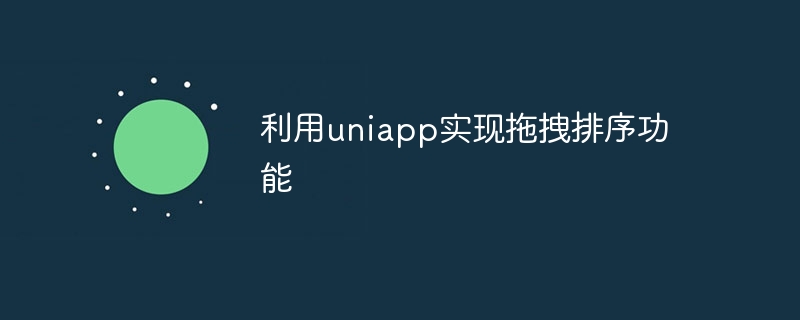
利用uniapp实现拖拽排序功能,需要具体代码示例
随着移动端应用的普及和需求的增长,拖拽排序功能变得越来越重要。无论是在社交媒体应用中的朋友圈排序,还是在任务列表中的任务排序,都需要拖拽排序功能来提供用户更好的交互体验。利用uniapp框架,我们可以很方便地实现拖拽排序功能。
首先,我们需要创建一个uniapp项目,并创建一个列表页面。在页面中,我们可以展示一个列表,每个列表项都可以通过拖拽来改变自己的顺序。下面是一个简单的代码示例:
<template>
<view>
<view class="list" v-for="(item, index) in list" :key="index" @touchstart="startDrag(index)" @touchmove="dragging($event, index)" @touchend="endDrag(index)">
{{ item }}
</view>
</view>
</template>
<script>
export default {
data() {
return {
list: [1, 2, 3, 4, 5],
draggingIndex: -1,
placeholderIndex: -1,
};
},
methods: {
startDrag(index) {
this.draggingIndex = index;
this.placeholderIndex = index;
},
dragging(event, index) {
const touch = event.touches[0];
const offsetY = touch.clientY;
const draggingItemHeight = 25; // 拖拽项的高度
const draggingItemIndex = Math.floor(offsetY / draggingItemHeight);
if (draggingItemIndex !== this.placeholderIndex) {
this.list.splice(this.placeholderIndex, 1); // 移除占位元素
this.list.splice(draggingItemIndex, 0, this.list[this.draggingIndex]); // 将拖拽项插入新的位置
this.placeholderIndex = draggingItemIndex; // 更新占位元素的位置
}
},
endDrag(index) {
this.draggingIndex = -1;
this.placeholderIndex = -1;
},
},
};
</script>在上面的代码中,我们通过@touchstart、@touchmove和@touchend监听拖拽开始、拖拽中和拖拽结束的事件。通过计算触摸点的位置和拖拽项的高度,我们可以根据触摸点的位置来确定新位置,并实时更新列表项的位置。最后,通过更新列表数据,我们可以实现拖拽排序的效果。
除了上面的代码示例,我们还可以添加一些额外的功能。例如,我们可以在拖拽开始时添加动画效果,使拖拽项变得更加显眼。我们还可以添加一个删除按钮,让用户可以删除某个列表项。这些额外的功能可以进一步提升用户体验。
以上是利用uniapp实现拖拽排序功能的简单代码示例。通过使用uniapp框架提供的各种组件和事件监听,我们可以轻松实现各种交互功能。希望本文能对大家有所帮助,同时也希望大家在实际开发中能够灵活运用uniapp框架,提供更好的用户体验。
以上是利用uniapp实现拖拽排序功能的详细内容。更多信息请关注PHP中文网其他相关文章!




